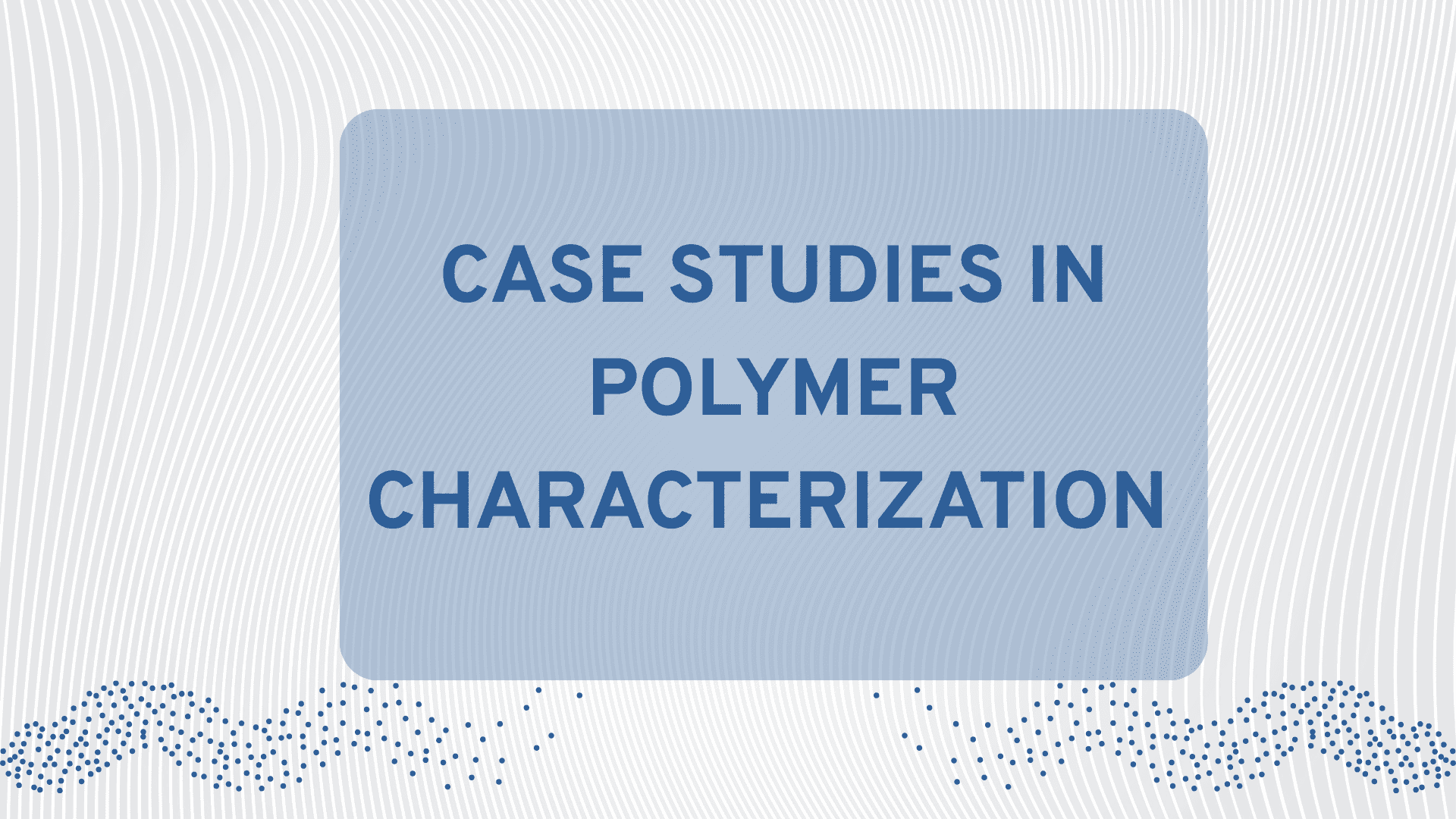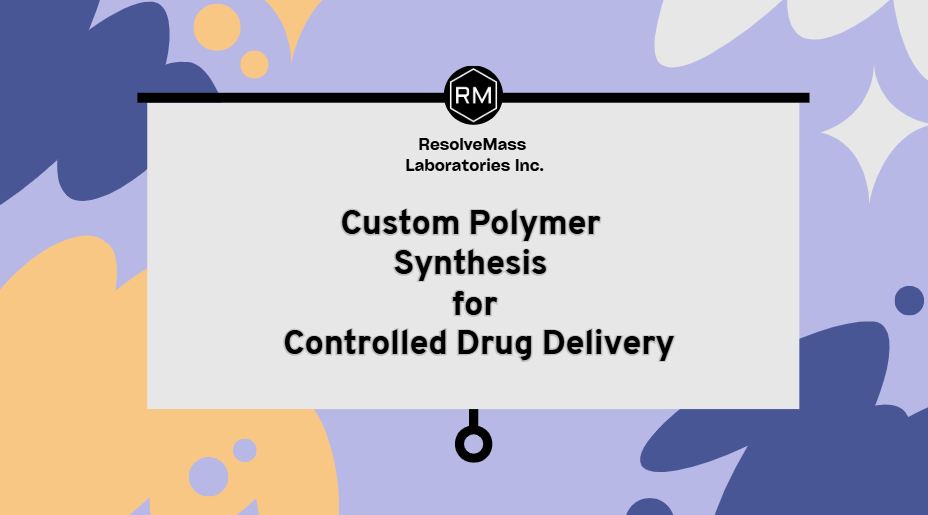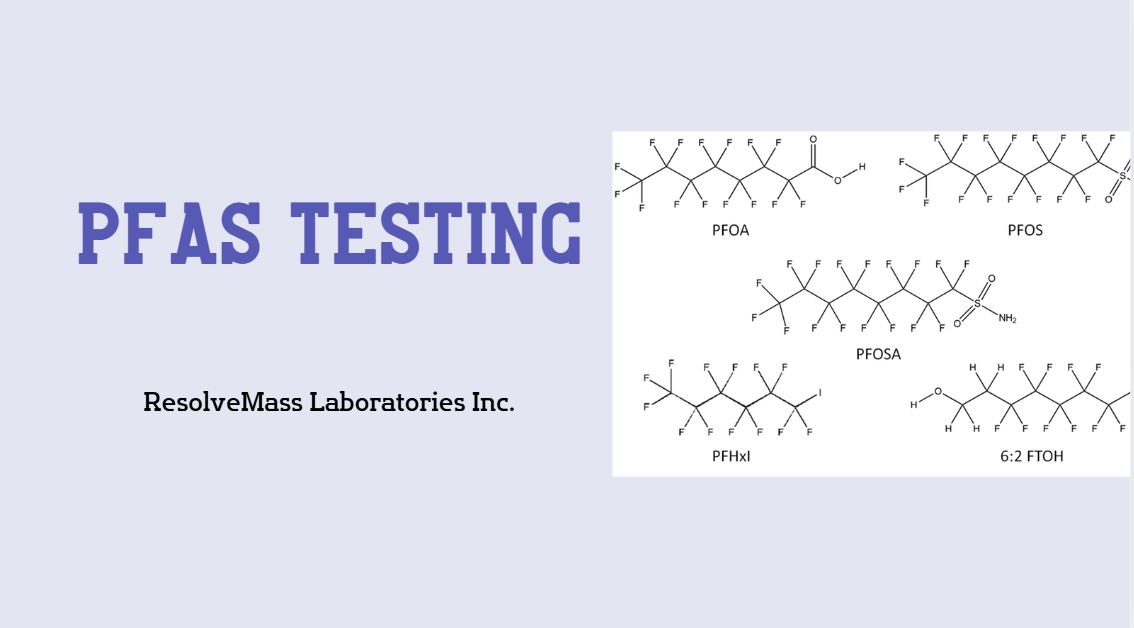Introduction
Polymer Material Characterization is the foundation of both modern polymer science and industrial innovation. From synthetic polymer studies in packaging to organic polymer evaluation in pharmaceuticals, industries depend on accurate testing to ensure product safety, performance, and long-term reliability. At ResolveMass Laboratories Inc., research combined with real-world case studies highlight how advanced techniques solve practical manufacturing and research challenges.
Accurate testing not only supports scientific growth but also ensures that materials meet global quality standards. With applications across aerospace, healthcare, automotive, and packaging industries, understanding polymer properties is crucial to progress. This article explores detailed case studies, comparing synthetic and organic polymers, analyzing branching effects, and demonstrating advanced testing techniques that guide safer, more reliable product development.
Quick Summary of the Article
- Polymer Material Characterization is essential for analyzing molecular structure, branching, and functional performance.
- Case studies highlight differences between synthetic and organic polymer testing and their industrial applications.
- Branching strongly influences strength, flexibility, and environmental degradability.
- Advanced techniques like light scattering, thermal analysis, and drug-polymer conjugate evaluation are shaping new innovations.
- ResolveMass Laboratories provides state-of-the-art facilities in Canada and the US for advanced polymer analysis.
- Practical insights show how accurate testing improves compliance, safety, and cost efficiency in product development.
Why Polymer Material Characterization Matters
Polymer Material Characterization links a polymer’s molecular structure to its performance in industrial and biomedical applications. Businesses rely on it to:
- Predict strength, durability, and degradation rates
- Ensure compliance with international safety standards
- Support innovation in packaging, aerospace, medical, and chemical fields
- Reduce costs by optimizing material formulation
Without precise testing, products risk failing in demanding conditions, which can cause safety hazards or economic loss. Advanced characterization helps companies forecast long-term behavior and tailor polymers for highly specialized uses.
👉 Learn more about our dedicated Polymer Analysis Laboratory in the US.
Case Study 1: Synthetic vs. Organic Polymer Characterization
Synthetic Polymer Characterization
Synthetic polymers such as polyethylene, polypropylene, and PVC dominate global industries because of their versatility and cost-effectiveness. Their analysis often involves:
- Measuring molecular weight distribution
- Conducting branching analysis to balance flexibility and strength
- Evaluating thermal stability under extreme temperatures
For instance, a leading packaging company needed to enhance polyethylene film performance while reducing raw material usage. By applying Gel Permeation Chromatography (GPC) and Differential Scanning Calorimetry (DSC), ResolveMass Laboratories demonstrated how precise branching evaluation improved tensile strength and material efficiency.
📌 Related resource: Polymer Analysis Techniques
This example shows how accurate synthetic polymer analysis ensures products remain durable, cost-effective, and sustainable in industrial environments.
Organic Polymer Analysis
Organic polymers, particularly biodegradable options such as cellulose and polylactic acid (PLA), are gaining importance in pharmaceuticals and eco-friendly packaging. Key testing focuses on:
- Biodegradability and decomposition rates
- Moisture absorption and interaction properties
- Compatibility with drug-polymer conjugates in medical applications
One case study explored organic polymers used in drug delivery systems. Results revealed that branching significantly influenced solubility, affecting whether the drug released gradually or all at once. This finding demonstrated how organic polymer testing directly impacts patient safety and treatment success.
📌 Explore: Drug-Polymer Conjugate Analysis
As industries push toward sustainability, precise organic polymer analysis ensures new materials are both effective and environmentally responsible.
Case Study 2: Impact of Branching in Polymer Characterization
Branching plays a major role in determining both mechanical and thermal properties of polymers.
| Branching Type | Effect on Polymer Properties | Industry Application |
|---|---|---|
| Linear | High crystallinity, strong tensile strength | Aerospace films |
| Short branching | Better flexibility, reduced crystallinity | Food packaging |
| Long branching | Higher melt strength | Extrusion molding |
A Canadian automotive manufacturer collaborated with ResolveMass to study polypropylene branching. Through advanced testing, they improved impact resistance while maintaining lightweight characteristics—critical for fuel efficiency and safety in vehicles.
📌 Read: Understanding Polymer Properties Through Analysis
Branching analysis provides industries with the ability to customize polymers for diverse applications, from lightweight automotive parts to advanced packaging solutions.
Case Study 3: Advanced Polymer Property Measurement
Light Scattering for Polymer Material Characterization
Light scattering methods provide detailed insights into absolute molecular weight and structure. This is especially valuable for high-molecular-weight polymers where GPC results alone may not be sufficient. These measurements guide precise formulation of high-performance materials.
📌 Discover: Polymer Characterization via Light Scattering
Thermal Analysis of Polymers
Thermal analysis techniques such as DSC and TGA reveal glass transition temperatures, melting points, and decomposition behavior. In one case, a pharmaceutical firm applied thermal testing to drug-polymer blends, ensuring long-term stability and safe storage.
📌 Learn more: Polymer Thermal Analysis
Crosslinked Polymer Analysis
Crosslinked polymers, widely used in implants and advanced coatings, require specialized evaluation for biocompatibility and durability. This type of analysis ensures performance over extended lifespans in critical applications.
📌 More here: Crosslinked Polymer Analysis
Together, these advanced testing methods provide a complete understanding of polymer behavior across multiple industries.
Challenges in Polymer Material Characterization
Even with progress, challenges remain in the field of Polymer Material Characterization:
- Detecting complex branching in high-molecular-weight polymers
- Differentiating between synthetic and blended natural materials
- Achieving reproducibility across global labs
ResolveMass addresses these issues using multi-technique approaches and advanced instrumentation. Their expertise ensures reliable, industry-ready results while reducing errors through standardization.
📌 Read: Key Challenges and Solutions in Polymer Analysis
Why Choose ResolveMass Laboratories Inc.
ResolveMass Laboratories is a leader in polymer science and advanced testing in both Canada and the US. Their reputation is built on:
- Accredited facilities meeting strict international standards
- Access to advanced testing such as polymer deformulation characterization
- Extensive experience supporting aerospace, healthcare, and packaging sectors
📌 Explore: Polymer Analysis Laboratory
With a collaborative and innovative approach, ResolveMass is a trusted partner for companies that demand reliable, safe, and cost-efficient material solutions.
Conclusion
Polymer Material Characterization is far more than routine analysis—it is the backbone of innovation, safety, and sustainability. Case studies on synthetic and organic polymers, branching effects, and advanced testing methods show how accurate evaluation improves products across industries. ResolveMass Laboratories Inc. remains a leader, offering advanced facilities, expert teams, and cutting-edge methods to guide the future of polymer science.
📌 Contact us today: Contact ResolveMass
FAQs on Polymer Characterization
Polymer material characterization is the study of a polymer’s physical, chemical, and thermal properties to understand its structure and performance. It covers parameters such as molecular weight, branching, degradation behavior, and thermal stability. This process helps predict long-term reliability and ensures the material meets strict industry regulations.
Synthetic polymer characterization focuses on durability, molecular stability, and thermal resistance, which are essential for aerospace, packaging, and construction applications. On the other hand, organic polymer analysis highlights biodegradability, moisture interaction, and compatibility with biological systems. This makes organic testing especially important for pharmaceuticals and eco-friendly packaging.
Branching plays a critical role in defining the mechanical and processing properties of polymers. It affects crystallinity, tensile strength, flexibility, and melt behavior, all of which influence end-use performance. By analyzing branching, industries can design materials that are stronger, lighter, or more flexible depending on application needs.
Several advanced methods are used, such as Gel Permeation Chromatography (GPC), Differential Scanning Calorimetry (DSC), Thermogravimetric Analysis (TGA), and Light Scattering. Each technique gives unique insights into different aspects of polymer behavior, from molecular weight and thermal properties to structural arrangement and degradation profiles.
Drug-polymer conjugates are studied to evaluate molecular interaction, stability, and drug release profiles under controlled conditions. Proper analysis ensures that medications release at the right rate, improving treatment effectiveness and reducing side effects. This makes it a vital process for pharmaceutical product development.
Some challenges include accurately testing high-molecular-weight polymers, identifying blended materials, and ensuring consistency across multiple laboratories. These difficulties can lead to variations in results. However, using multi-technique approaches and advanced instruments helps overcome many of these limitations.
Crosslinked polymer analysis examines the three-dimensional network structure of a polymer to evaluate elasticity, durability, and safety. It is especially important in medical implants and protective coatings, where long-term performance and biocompatibility are critical. Testing ensures the material performs reliably under real-world conditions.
Thermal analysis provides detailed data on melting points, glass transition, and decomposition temperatures. This helps industries ensure that polymers remain stable during manufacturing, storage, and usage in extreme conditions. It also assists in selecting the right material for specific high-performance applications.
For very large molecules, techniques such as multi-angle light scattering and viscometry are often applied. These methods provide accurate measurements of molecular weight and size distribution where traditional GPC results may not be sufficient. Such analysis ensures a more complete understanding of polymer performance.
References
- Dai Vian, W., & Denton, N. L. (2018). Hardness comparison of polymer specimens produced with different processes. In Proceedings of the 2018 ASEE IL-IN Section Conference (Tech. Paper No. 3). Purdue University. https://doi.org/10.5703/1288284316841
- Campo, E. A. (2008). Selection of polymeric materials: How to select design properties from databases. William Andrew Publishing. https://books.google.co.in/books?id=gBlJN_vhPQ4C


